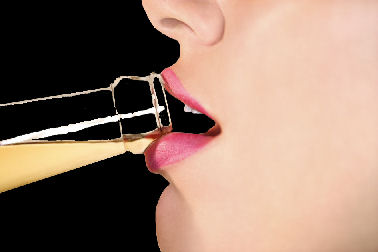You could have earned a contest point if you were logged in! |
|
Different Types of Beer
Lagers and Ales

Beer is usually categorized into two types: ale and lager.
Ale is made with a variety of yeast (Saccharomyces cerevisiae) that rise to the top of the fermentation tank and that produce a higher alcohol content than lagers. Ales range from fruity-tasting pale ales to dark and roasty stouts.
Lager (from the German word meaning to store) originated in the Bavarian region of Germany. Lager, the most popular beer style in the United States, is made with bottom-fermenting yeast
(Saccharomyces carlsbergensis , now classified as Saccharomyces uvarum). Lager styles include pilsner (a golden beer with a distinctive hop flavor) and bock (a dark, strong, malty beer).
Ales are generally associates as beers originating from the British Isles, whereas Lagers are generally associated with European continental origin. Ales are served warmer than Lagers, which reflect the temperatures at which they were originally fermented.
Ales are, in comparison, fermented warm (generally around room temperature). Ale fermentation is of shorter duration than Lagers, though aging times may be equal.
Ale recipies generally contain more hops and malt varieties, which usually results in a more bitter beer. The higher fermentation temperature also tends to result in a spicier taste.
Lagers of the bavarian tradition (due to the cooler alpine temperatures where they originated) are brewed with yeast that have adapted to the lower temperatures, and as a result of the lower temperature, require a longer fermentation than ales. At the end of the fermentation, the yeast settle to the bottom of the tank, which can then be recovered and re-used.
The term "Lager" is derived from the german word "lagern" which means "to store".. which is exactly what happens. Lagers are stored at low temperatures for considerably longer times than their Ale cousins.
This low temperature, long time period fermentation results in a generally mild, fruity aroma, and a crisp, clean taste. Lagers do not completely remove the bitterness, but it is generally less of an issue than with Ales.
Dry and Ice Beers
So called "Dry" beers originated in 1987 in Japan when the Japanese brewery Asahi introduced "Asahi Super Dry". Until that point, the Japanese market had been used to beers modelled after German beers... and the introduction of something different resulted in an instant success. Shortly thereafter Japan's Kirin brewey introduced their own version, "Kirin Dry", and this also met with astounding success. The roots of Dry beers were firmly planted.
American brewers, not wanting to miss out on this new market soon introduced their own brands of Dry beers, with "Michelob Dry" introduced in the United States 1988, and in 1989, Molsons introduced Dry beer to Canada with their "Molson Special Dry" launch.
The "Dry" moniker has nothing to do with water content, or alcohol content - instead it deals with reducing the sugar content of the end product beer.
"Ice" beers on the other hand are specifically brewed for higher alcohol content, using an "Ice" filtration process that uses the difference in the chemical properties of the water content vs. alcohol content to ensure a higher alcohol content, and a smoother taste.
Light Beers
The definition of "Light" beers differs between different countries.
In Canada, a "Light" beer is based solely on the alcohol content of the beer - any beer that contains less than 4% and more than 2.6% alcohol per volume can be called a light beer.
In the United States, a "Lite" beer is based on the caloric content. Any beer which contains less than 100 calories can be called a "Lite" beer. US "Lite" beers are often (but not always) alcohol reduced as well.
In Australia, a "Light" beer can have between 2.2% and 3.2% alcohol.
In Scotland, beer is measured according to the "schilling category", where a "light" beer is generally a beer with less than 3.5% alcohol.
Confused yet? Me too.
|